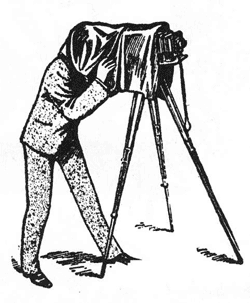Small Home Gazette, Spring 2013
Letter From the Editor: photographing a bungalow
Is your bungalow nice enough to be photographed for a magazine? If you’re like most people (including me), your answer would likely be, “My house is nice, but glossy magazine material? No.”
Then, several years ago I was fortunate enough to have my bungalow photographed for an article on kitchens in American Bungalow magazine. I still remember my reaction when the magazine arrived, and I flipped to the page with my kitchen.
“Wow!” was my first thought. “Whose house is that? I would love to live there.”
Bungalow Club member Sonja Dahl had a similar reaction when she saw the photos of her bungalow’s interior, which will be published in American Bungalow later this year.
“I was embarrassed about my bungalow, compared to other houses you see in the magazine,” says Sonja. “They’re so spectacular, and those people have all this money.” But she relaxed when she saw the final images. “It actually looks pretty good,” she says in a modest, Minnesotan way.
So what’s the secret? I asked Alex Vertikoff, who does much of American Bungalow’s photography, for some insight.
 “I usually contact the owner and ask that they do nothing at all besides the cleaning they would normally do,” offers Alex. “The last thing I want is to walk into a home turned into a museum. I think rooms have a habit of shaping up by themselves as people use them, so it doesn’t bother me if there might be a Pier 1 Imports object next to a relic from someone’s grandparents. I especially hate people going out and creating huge flower arrangements. I almost always find a way to get them out of any shots.”
“I usually contact the owner and ask that they do nothing at all besides the cleaning they would normally do,” offers Alex. “The last thing I want is to walk into a home turned into a museum. I think rooms have a habit of shaping up by themselves as people use them, so it doesn’t bother me if there might be a Pier 1 Imports object next to a relic from someone’s grandparents. I especially hate people going out and creating huge flower arrangements. I almost always find a way to get them out of any shots.”
Well. That’s honest.
“I think the biggest reason photos sometimes look better than real life is that we remove things that do not work to enhance the whole,” Vertikoff continues. How? “By cropping and camera placement,” he says. “Remember—to make an interesting image, what you leave out is almost more important than what you include. We present the finished image out of context, so we fill in what’s missing with our imagination.”
And Vertikoff has a secret ingredient: Light.
“I shoot using available light only. That’s why windows are so important. By using a tripod and taking long exposures, a photographer can actually amplify the light in a way the human eye cannot. It’s not the amount of light that’s important; rather it’s what the light does. You have to let the light grab your attention and show you what to do. While you need to respect the spaces you’re in, they cannot become a defined space that you are trying to document. Whether it’s the Gamble House, the Getty Museum, or my mom’s basement, you have to clear that data out of your head and approach a space as a sculptural, three-dimensional grouping of objects. My job is to open myself to the space so that I can let the light and the objects merge into something that I want to capture and enhance.” Vertikoff pauses. “That’s all there is to it!” he says with a laugh.
Vertikoff then offers one last piece of advice: “No one should leave anything out to be photographed that would seriously embarrass them or get them arrested.”











